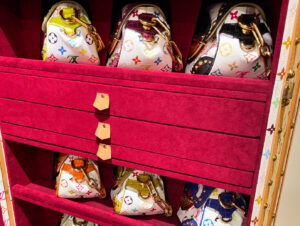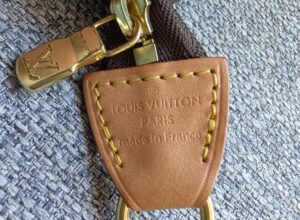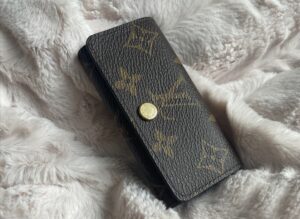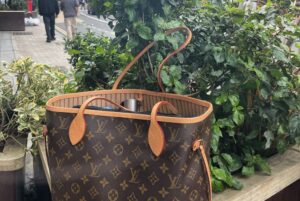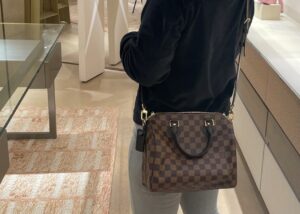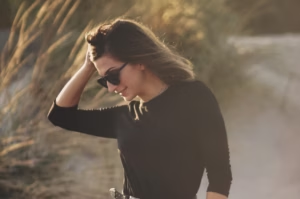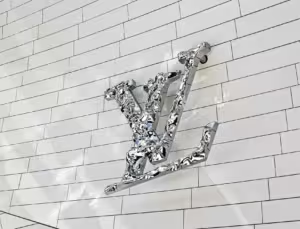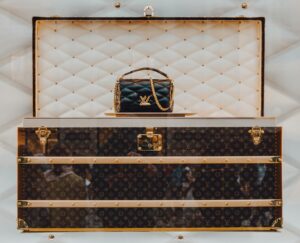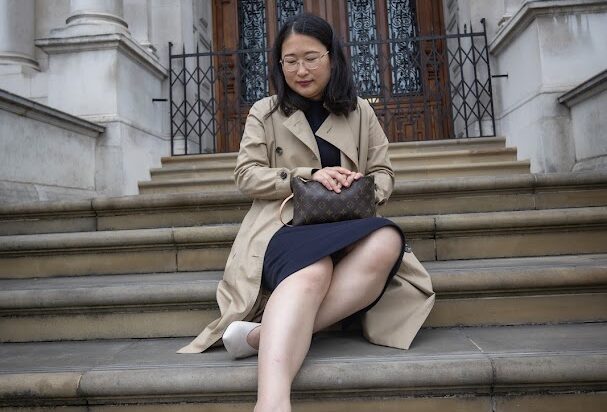Buying second-hand or vintage Louis Vuitton bags can be a smart way to acquire luxury goods without the hefty price tag. However, it’s essential to navigate the market wisely to ensure you get authentic, high-quality pieces. Whether you’re shopping on eBay, personal consignment shops, or through Facebook groups, this guide will help you make informed decisions and get the best deals. (Also see: How to Start Your Collection, if you have never bought any LV items)
Why Buy Second-Hand or Vintage Louis Vuitton?
Affordability: Buying second-hand or vintage Louis Vuitton bags is typically cheaper than buying new ones.
Sustainability: Buying pre-owned or vintage Louis Vuitton bags is eco-friendly, reducing waste and the demand for new production.
Access to Rare Pieces: You may find vintage or discontinued Louis Vuitton bags not available in current collections.
Carefree: Have you ever had an experience where you bought an expensive bag but were too afraid to use it because you feared it might get damaged? It might sound silly, but it happens to a lot of people, especially with Louis Vuitton bags that use a lot of cowhide leather, which can easily get scuffed and marked by water. Some individuals actually get rid of these pieces due to fear! Second-hand bags are typically a bit more worn, and some of them already have a gorgeous “patina” – meaning the leather has got a beautiful honey brown colour from aging and exposure to sunlight. This means you don’t have to worry about damage and can use them just like any other bags.
Where to buy Second-Hand or Vintage Louis Vuitton Bags
- Second-hand Retail websites such as eBay, Rebag, The RealReal, Farfetch, Luxe Collective, etc
- Personal Consignment Shops
- Facebook Groups
Tips for Shopping on eBay
Check Seller Ratings and Reviews: Always buy from sellers with high ratings and positive feedback. Generally, sellers with more than 10,000 feedback are regarded as very experienced sellers. Obviously, you have to check the feedback ratings, and you should take a closer look at what the reviews are saying. Even those giving positive ratings might have some comments that could be worth checking – speed of delivery, product quality such as smells, any wear and tear that the listing didn’t mention, etc.
Authenticate the item: Look for listings that offer authenticity guarantees. There is already a buyer protection scheme called “eBay Money Back Guarantee” – get the item you ordered or your money back. This means if the listing says it is a bag from Louis Vuitton and the bag is not made by Louis Vuitton, you can get your money back from eBay. On top of that, eBay provides an “Authenticity Guarantee” for some items. This means the item is sent to an eBay authenticator before shipping, giving extra relief to buyers. You can also consider using third-party authentication services yourself after you get the item.
Examine Photos Carefully: Look for clear, high-resolution images of the item from multiple angles, including close-ups of the logo, stitching, and date code. It is a good sign if the photos clearly show any wear and tear in close-ups and the description clearly mentions them. Some sellers are extremely descriptive, whereas others just say “Used.”
Ask Questions: If any detail is unclear, don’t hesitate to contact the seller for more information. It is very common for buyers to ask for more photos or details before they decide to buy. It also shows that you are a keen buyer, so you may get a special discount from the seller.
“Like” the Item Anyway: Even if the item is out of your budget, you may still have a chance to get it at a cheaper price. Push the “like” (heart) button, and it will notify the seller that you are interested. There is a function for sellers to send a special offer to those who are interested, and many sellers use this function to sell items quickly.
View this post on Instagram
Shopping at Personal Consignment Shops
Apart from big second-hand or vintage e-commerce websites like eBay, you may find smaller shops that sell second-hand or vintage bags, typically on their own websites or using social media platforms like Instagram. Many of these shops use live streams to auction items, which can provide a very exciting purchasing experience. However, you need to be more careful, especially in terms of authenticity, because there are fewer buyer protection schemes compared to bigger marketplaces. Examples of popular consignment shops include Vestiaire Collective, but there are many smaller shops you can find on social media.
Reputation Matters: Choose consignment shops with a solid reputation for dealing with luxury goods.
Return Policy: Ensure the shop has a reasonable return policy in case the item doesn’t meet your expectations.
Navigating Facebook Groups
Join Reputable Groups: Look for groups with strict rules and active moderation to avoid scams. Examples of popular Facebook Groups include ” Louis Vuitton Addicted – Resale Buy Sell Trade & Chat “.
Authenticate: Use authentication services by a third-party authenticator.
Buyer Protection: Use payment methods that offer buyer protection, such as PayPal.
The photo below shows me with my Neverfull pouch. The Neverfull series comes with a pouch, and often people sell it because they don’t use it. You can also find travel tags that come with Keepalls (travel bags) or Bandoulières (adjustable straps for bags) being sold by others. These items are not sold separately in stores, but you can find them in good condition in the second-hand market relatively easily, as there are always people who don’t use these optional items.

Spotting a Fake Louis Vuitton
Material Quality: Authentic Louis Vuitton items are made from high-quality materials. The canvas should be thick and durable, the leather trim should darken over time, and the stitching should be even and consistent. I would say the stitching is probably the easiest thing to spot. I see a lot of questions on forums asking if LV products are fake, and most of them have wary, uneven stitching, which indicates lower quality compared to authentic products.
Logo and Monogram: The LV logo should be symmetrical and consistently placed. The monogram pattern should be uniform and aligned correctly. However, I have to mention that the LV logo pattern on my Neverfull MM, which I bought from an LV store, is not aligned on the sides, meaning the fabric or material is not perfectly horizontal. For that reason, I would not say that bags with a bit of misalignment in the pattern are necessarily fake.
When you see the photos of my Neverfull below, you can tell that the pattern looks perfectly aligned horizontally and symmetrically on the front, but on the sides, it is slightly misaligned with the pattern on the other side. But the misalignment is very subtle and does not detract from the overall aesthetic of the product, so I assume it passed quality control.


Date Codes and Serial Numbers: Louis Vuitton bags have date codes, not serial numbers. Verify that the date code format matches the correct year and country of production. You can Google “Louis Vuitton date code” to find if the date code format is correct. Date codes are also useful; some of the bags have “made in” stamps, which indicate where the items were made. When you look at date codes, they come with two letters followed by four digits. The first two letters show where the products were manufactured, so you can spot any contradictions with the “made in” stamps.
Hardware: The hardware should feel heavy and substantial, often engraved with “Louis Vuitton” or “LV.”
Buying second-hand Louis Vuitton items can be a rewarding experience if approached with diligence and care. Whether you choose eBay, personal consignment shops, or Facebook groups, always prioritize authenticity and quality. By following these tips, you can confidently add beautiful, genuine LV bags to your collection at a fraction of the retail price.



